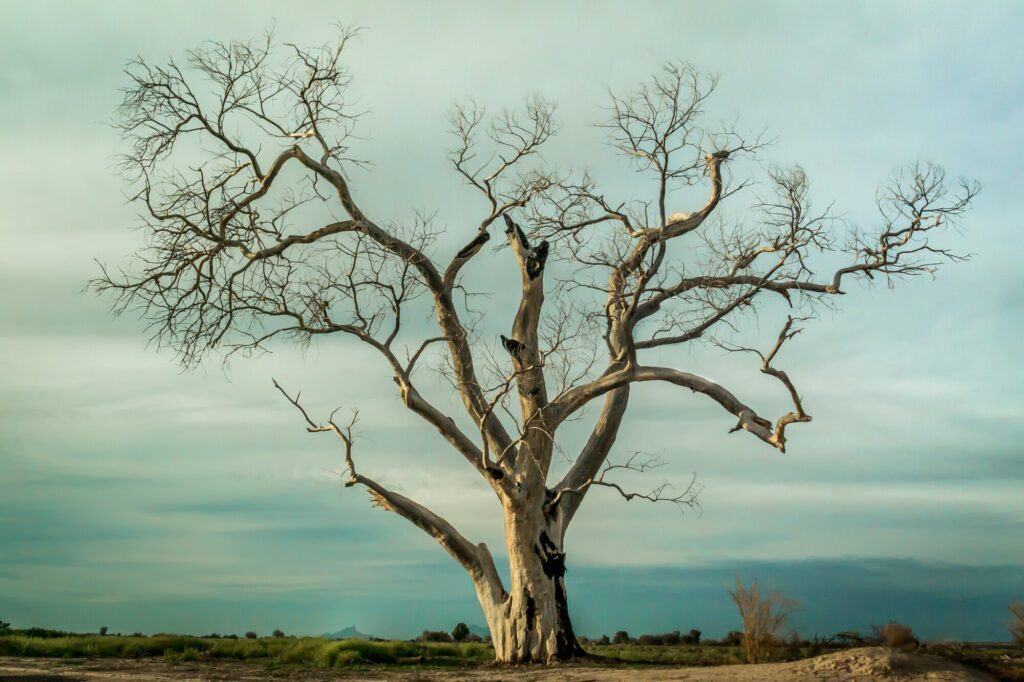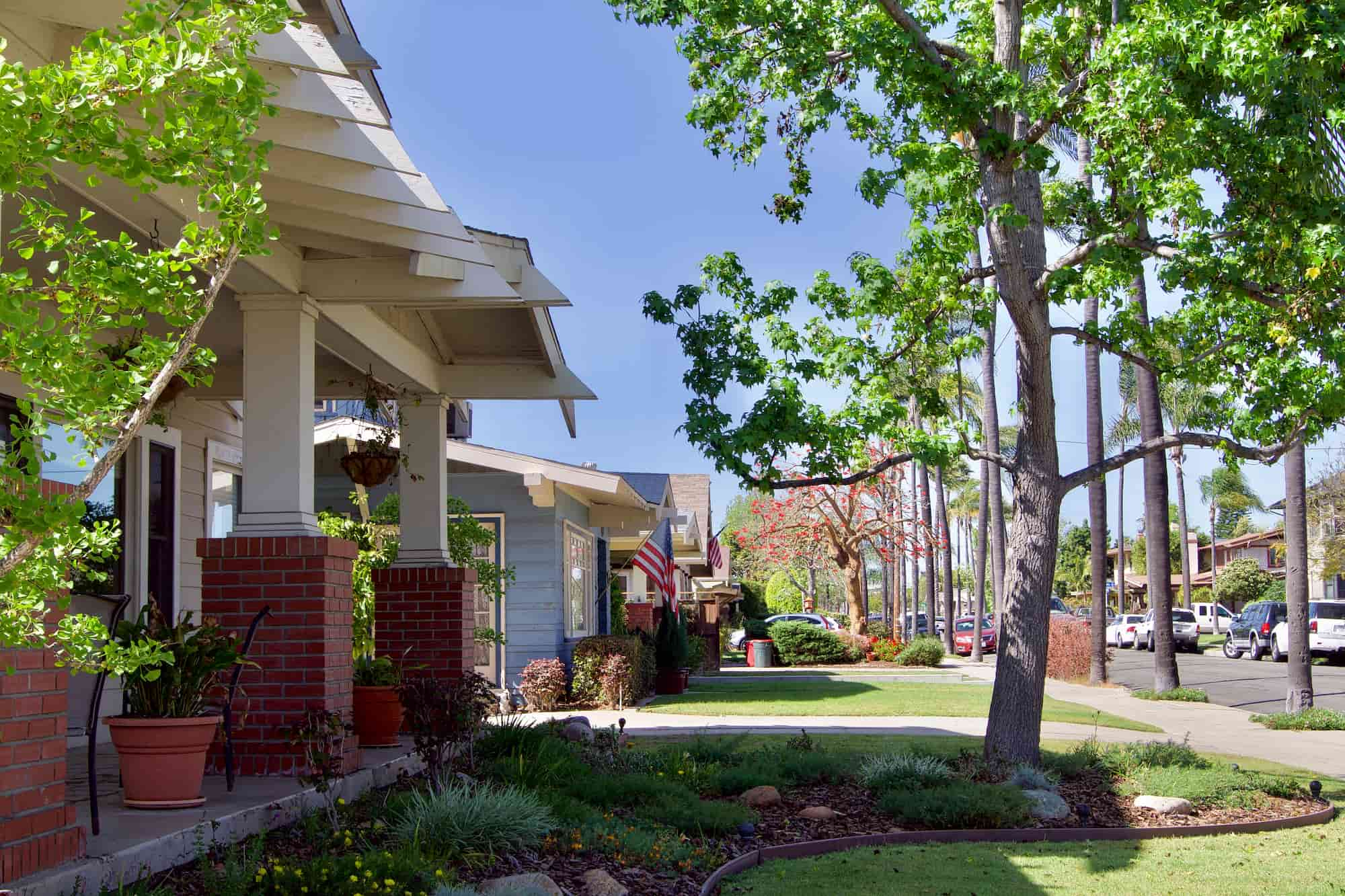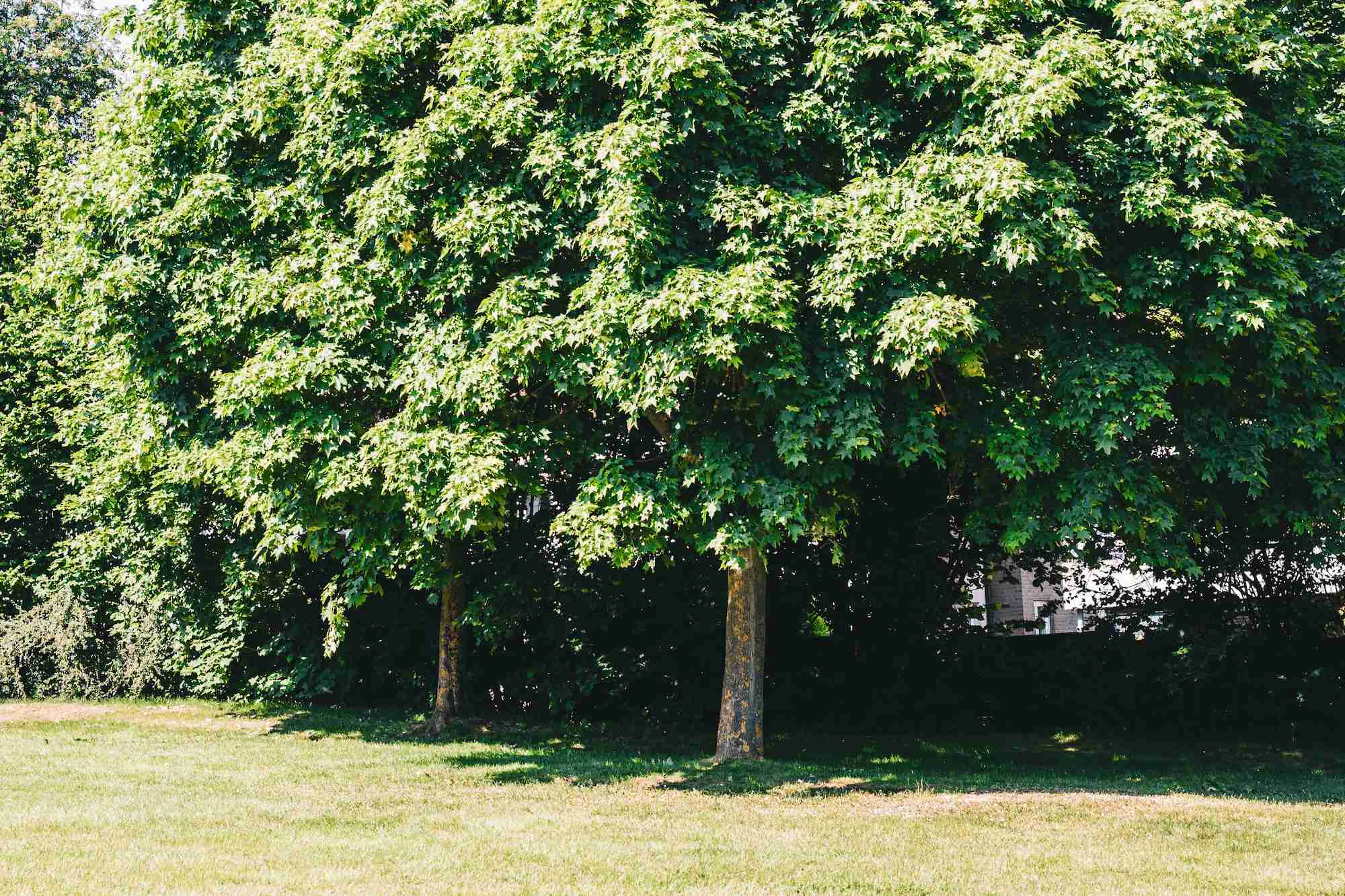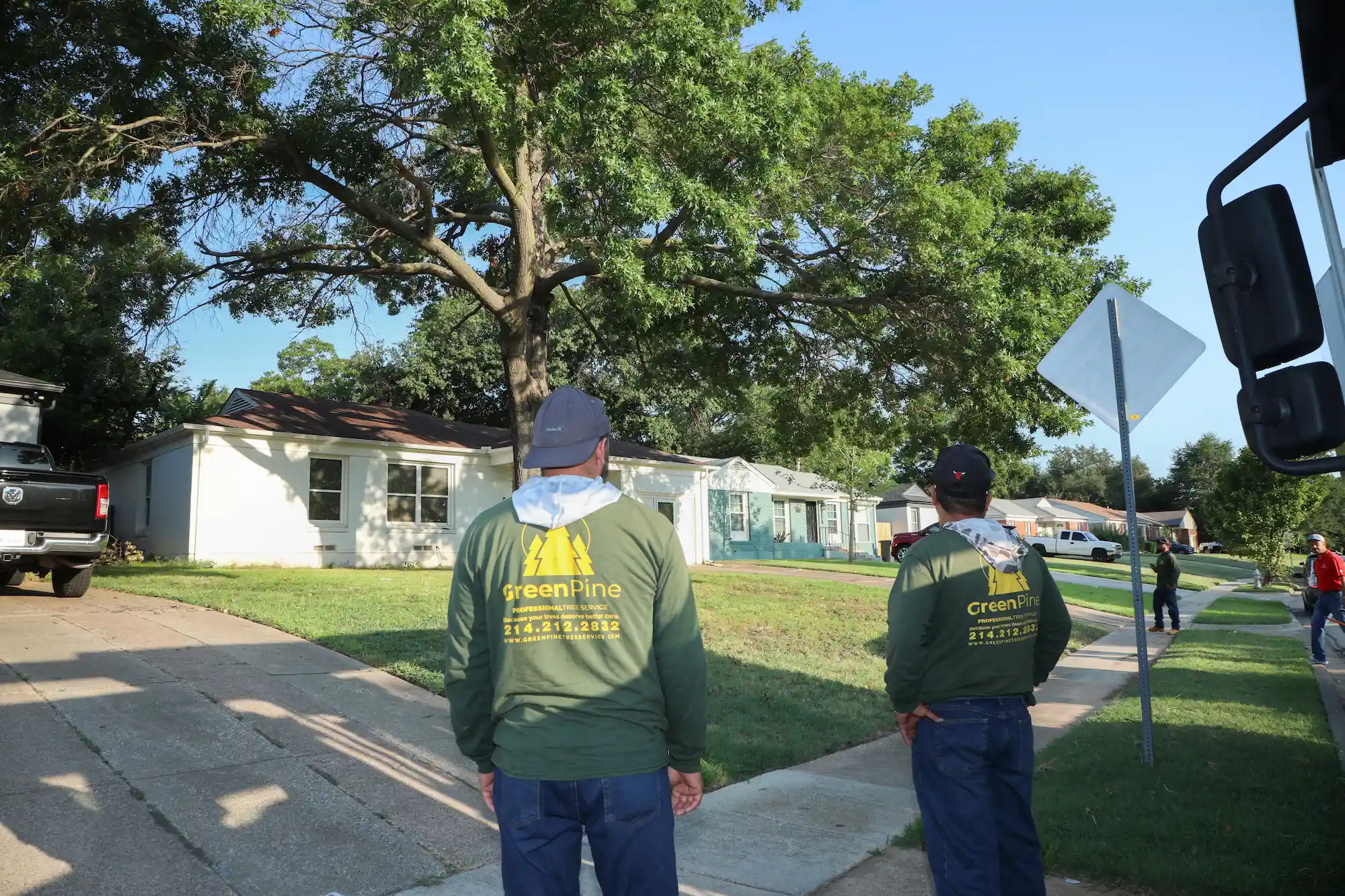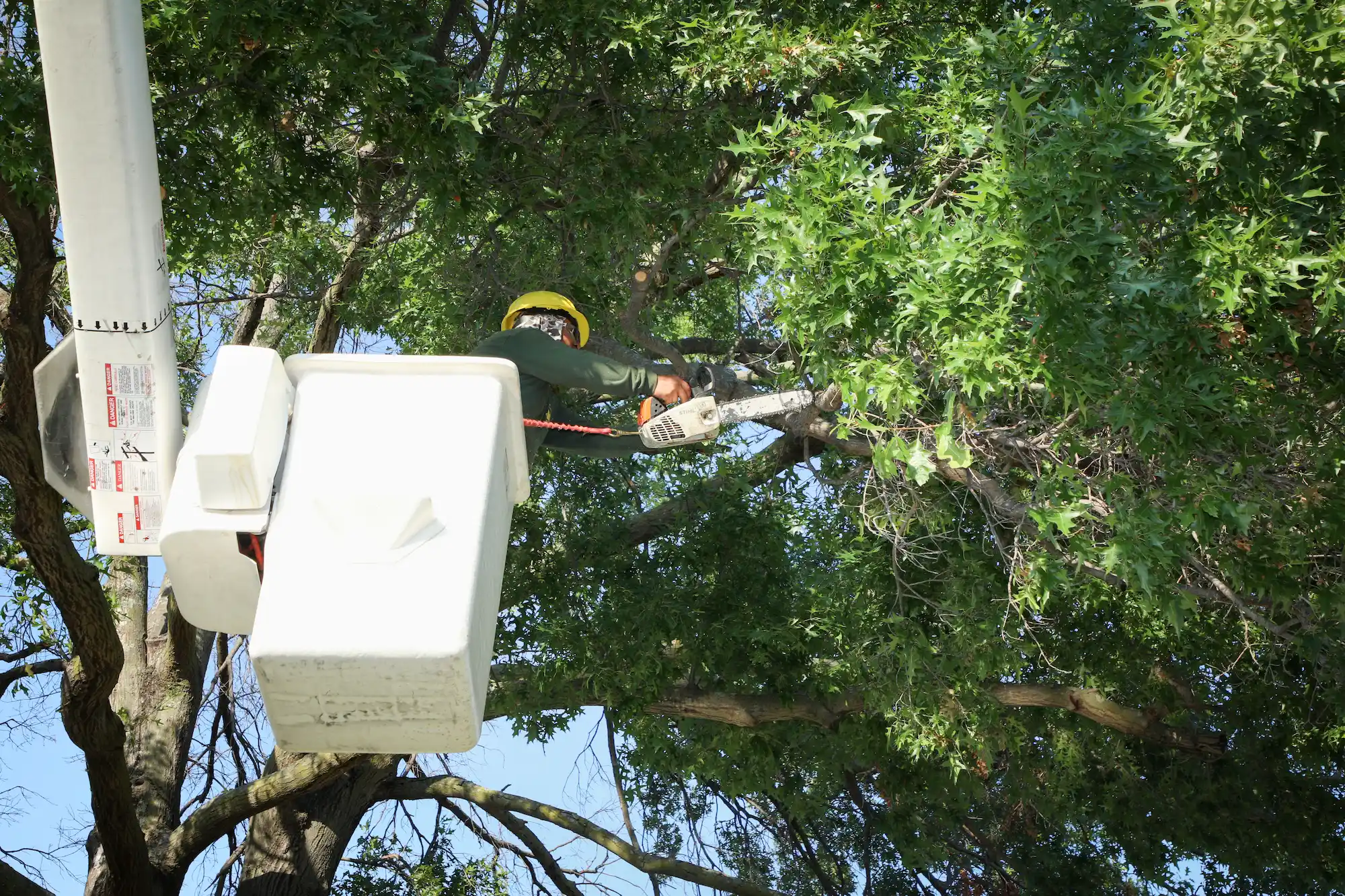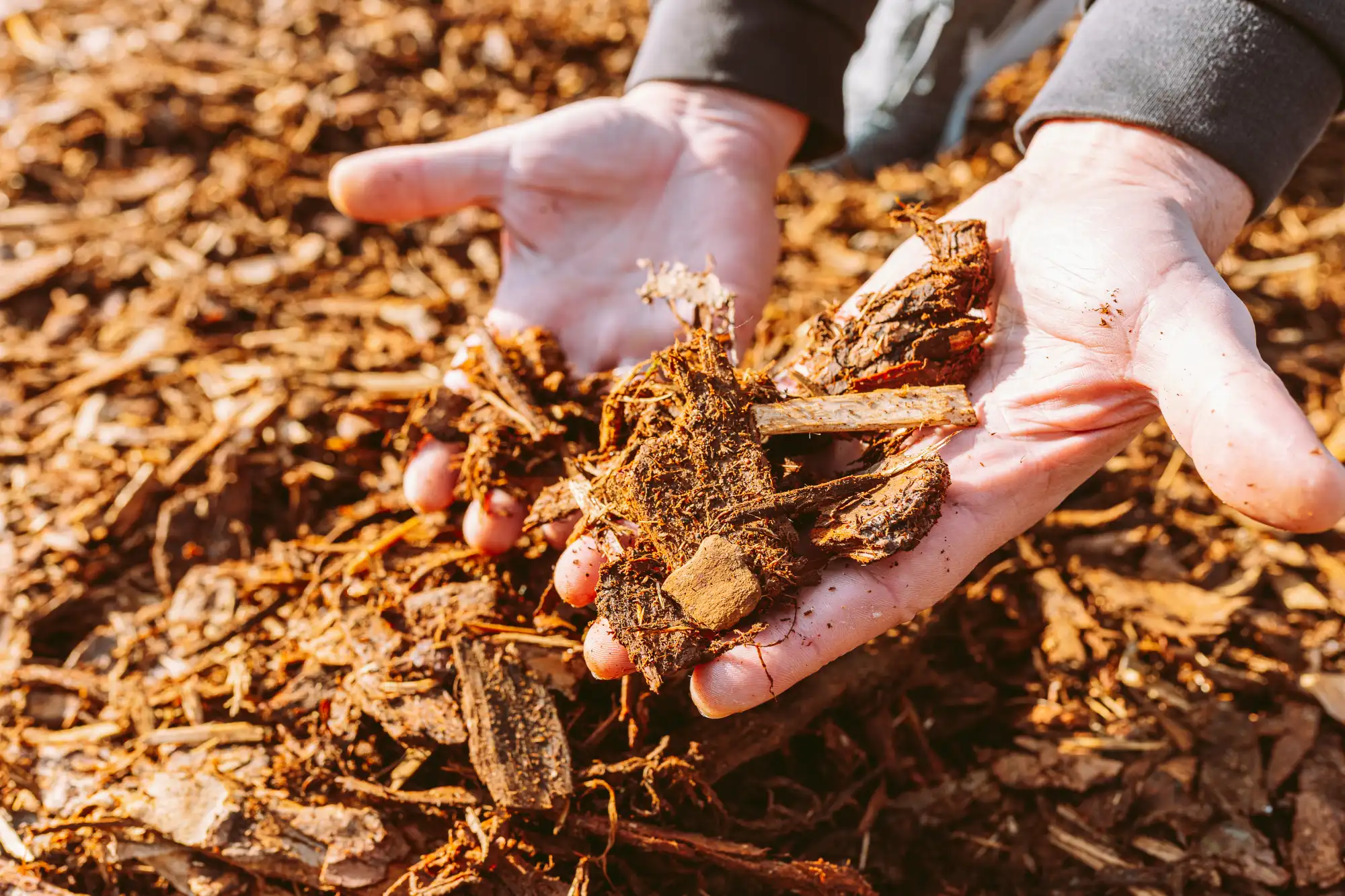Trees provide various benefits to the environment and our well-being. However, like any living organism, they can fall victim to diseases and stress. Recognizing the early signs of a sick tree is crucial to preventing potential risks to your property.
Consulting with a professional arborist is important for a correct diagnosis and tailored treatment plans. By staying vigilant and taking proactive steps, you can protect your trees and preserve the beauty of your landscape while avoiding potential risks.
In this article, we look at the critical signs that indicate your tree is unwell and offer insights into effective treatments to restore its health.
Spotting the Signs
One of the first indicators of a sick tree is changes in its foliage. Keep an eye out for:
- Discoloration
- Wilting
- Premature leaf drop
These signs can indicate nutrient deficiencies, pests, or diseases affecting the tree’s health.
Dead or decaying branches are unsightly, pose a risk to the tree, and can cause property damage. Inspect your tree regularly for branches with no leaves, brittle twigs, or a lack of flexibility, as these are signs of possible trouble.
Pay attention to the overall structure and growth pattern of your tree. If you notice unusual swelling, cankers, or growths on the trunk, it could indicate a disease affecting the tree internally.
The bark serves as a protective layer for the tree. If you see any peeling or loose bark, it may be a sign of pest infestation or disease. Additionally, cracks or fissures in the bark can provide entry points for pathogens.
Insects and pests can wreak havoc on trees. They weaken them and make them susceptible to diseases. Look for signs of pest infestation, such as unusual holes in the trunk, sawdust-like material at the base, or an abundance of insects.
Treatment Strategies for a Sick Tree
Remove any diseased or dead branches through proper pruning. Tree trimming in Dallas not only enhances the tree’s appearance but also promotes healthier growth. Regular trimming also improves air circulation, reducing the risk of fungal infections.
Your tree must be planted in well-draining soil. Compacted or waterlogged soil can lead to root rot and other diseases. Mulching around the tree’s base helps retain moisture and regulates soil temperature.
If you suspect a tree disease, consult a professional arborist to identify the issue sooner rather than later. Treatment may involve the application of fungicides or other disease-specific remedies to curb the spread of infections. Discuss if you need to keep pets and children away from certain areas during this process.
Implement pest control measures, such as insecticidal treatments or introducing natural predators, to manage pest infestations. Regular inspections help catch potential problems before they escalate and require tree removal in Dallas.
A Proactive Approach to Tree Care
Spotting the early signs of a sick tree is crucial for effective intervention. Regular inspections, coupled with prompt and appropriate action, can safeguard the health and longevity of your trees.
Contact GreenPine Tree Service in Dallas, Texas today for an appointment. We have an experienced team of arborists who will assist you with all your tree maintenance needs.



